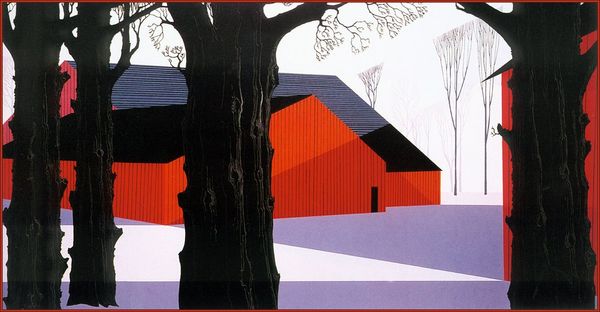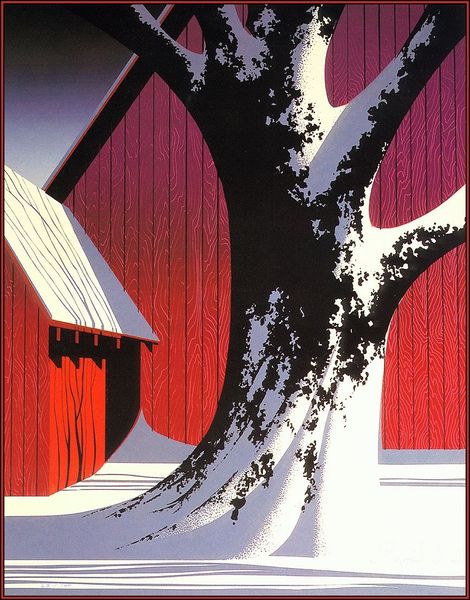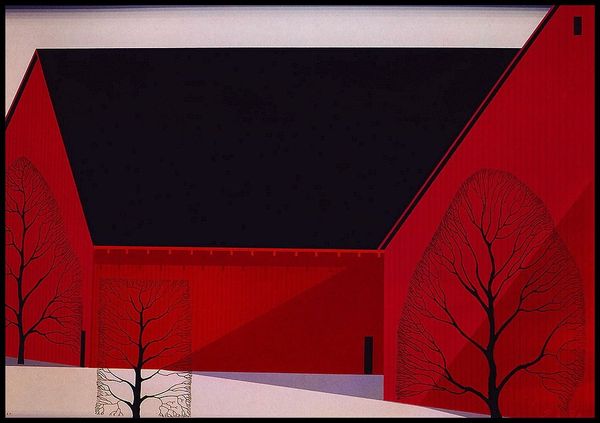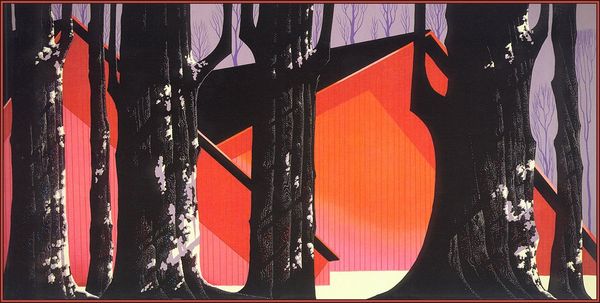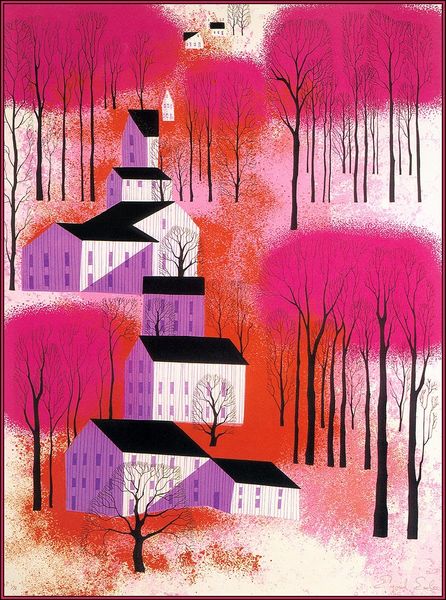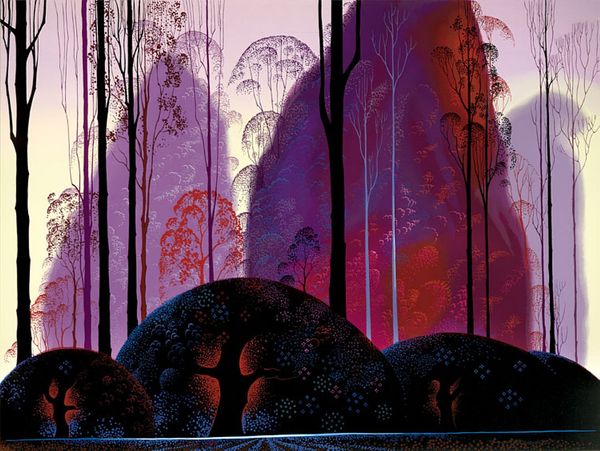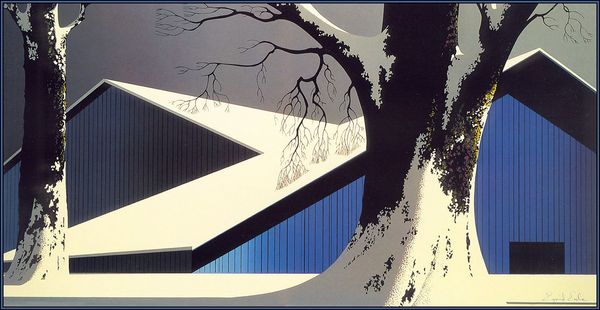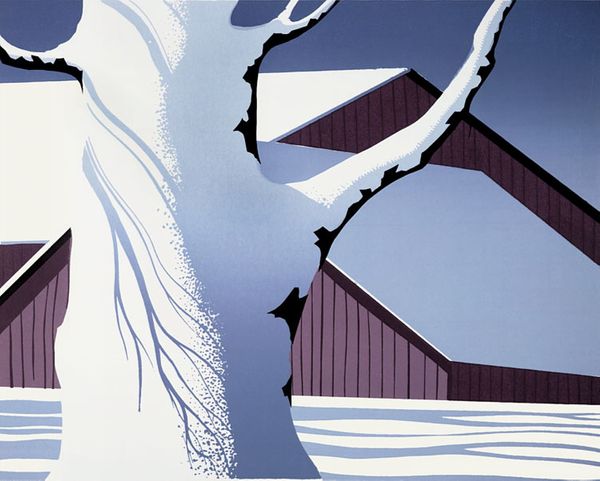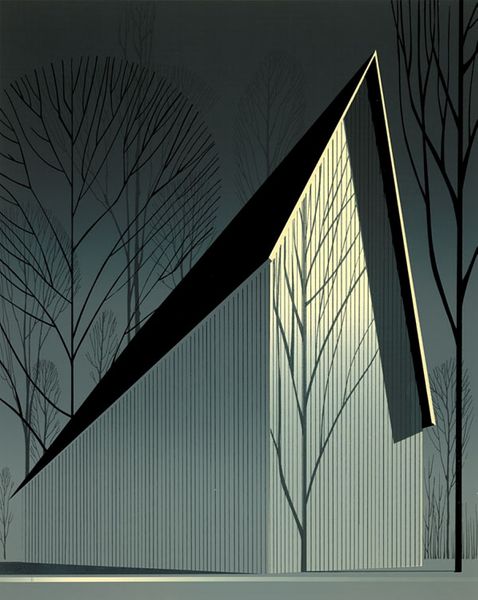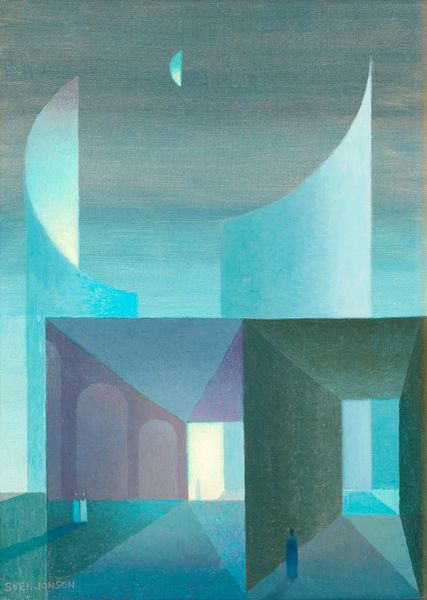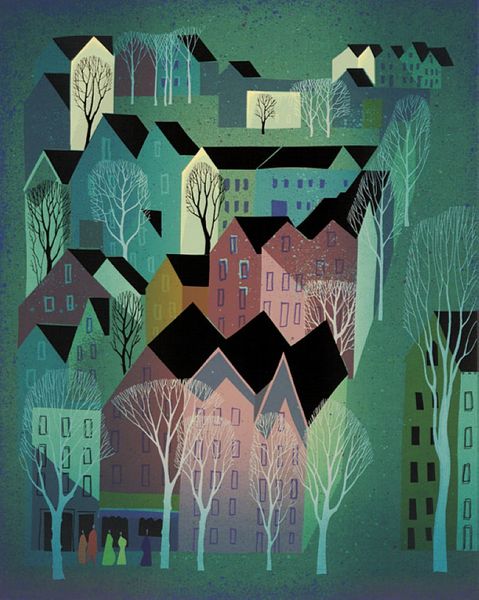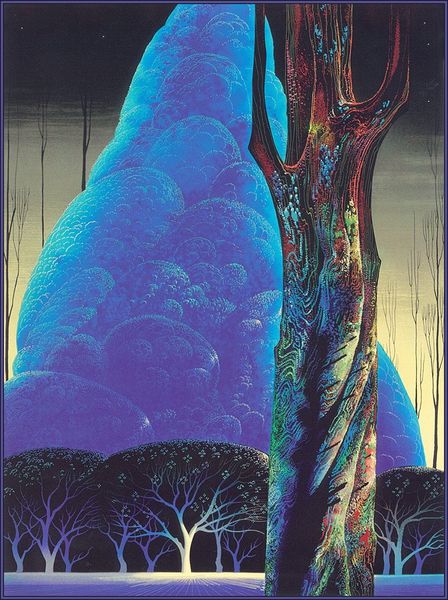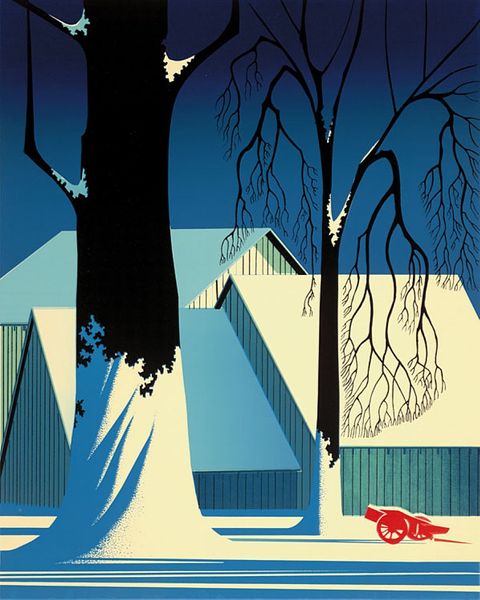
painting, print, acrylic-paint, ink
#
allegories
#
painting
# print
#
landscape
#
acrylic-paint
#
ink
#
geometric
#
line
Copyright: Eyvind Earle,Fair Use
Curator: Here we have Eyvind Earle's "Amethyst," created in 1983. It is rendered with acrylic paint and ink, and printed as a work on paper. What's your first impression? Editor: Striking! It feels almost like a dreamscape, a world of intense magenta hues juxtaposed with cool snow. There is also something very stylized and almost stark about the geometric composition and prominent use of lines. Curator: Absolutely. Earle's landscapes are often allegorical, and to understand his choices in “Amethyst” it helps to situate it in the context of both 20th century formal experimentation and his biography. This color palette and stylistic execution challenges established notions of landscape paintings and invites critical discussion about whose reality is valorized as objective in artistic institutions. Editor: I'm interested in how the visual structures and themes of the artwork tie into a broader social and political picture. Are you suggesting it is linked to the debates happening about representational imagery and social justice within art history and contemporary theory? Curator: Indeed. Earle started as a background artist for Disney, and he often drew stylistic references from various schools of art. But the social context is important as well. Postmodern theory was deconstructing concepts such as authenticity, meaning, and identity, impacting institutions like Disney as well. Editor: Looking closer at Earle’s piece, there is also this tension. You can almost sense a melancholy but also an intensity. It reflects broader dialogues happening within society. Curator: That tension highlights the artwork’s role within the art world. There is a need to challenge dominant artistic and historical structures that are deemed 'historical', or 'authoritative'. Editor: Thank you for sharing your understanding of this painting. I will leave today viewing “Amethyst" in a very different context, a historical product of not just aesthetic design but philosophical debate. Curator: It’s exciting how a seemingly straightforward landscape reveals deeper historical, institutional, and personal undercurrents. It certainly makes one consider the multiple interpretations inherent in what seems self-evident.
Comments
No comments
Be the first to comment and join the conversation on the ultimate creative platform.
